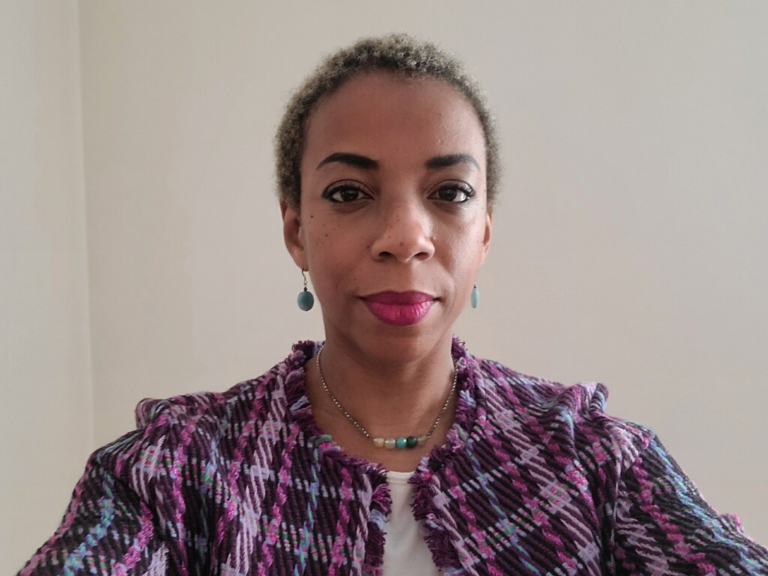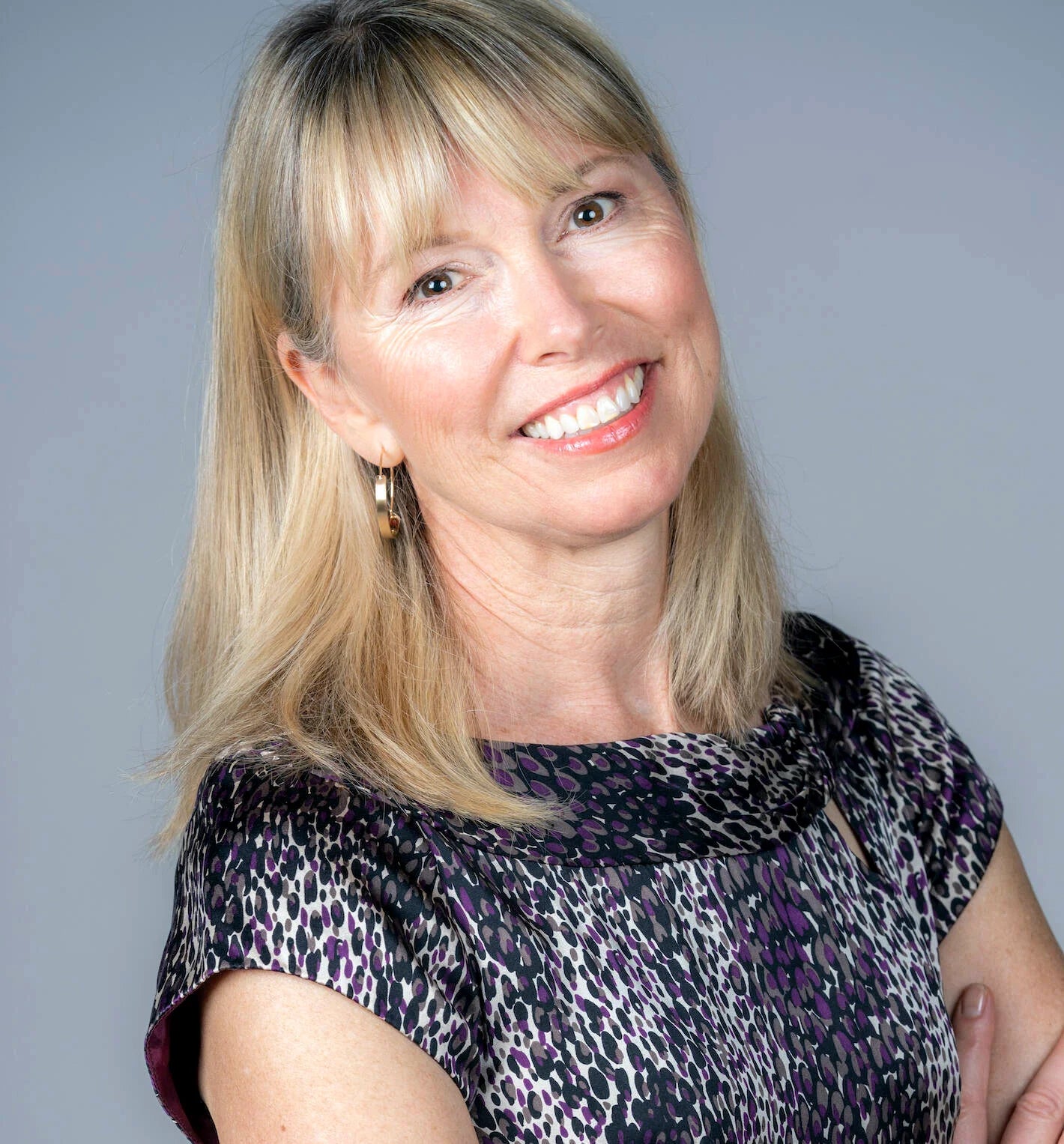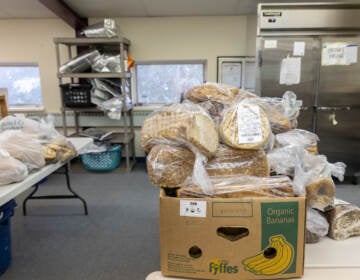Racist social media posts inspire Lower Merion parent to call for anti-hate training in schools
Jennifer Lynn talks with Andrea Gosfield, who calls for a more racially equitable district after her son showed her racist social media posts by schoolmates.
Listen 7:09
Penn Valley resident Andrea Gosfield, proposes anti-hate protocol after racist social media posts by Lower Merion School District students (Photo by Andrea Gosfield)
It’s a Facebook video that changed America: the May arrest of Black Minnesota resident George Floyd. A white police officer pressing his knee into Floyd’s neck as he gasped the words “I can’t breathe,” before appearing lifeless.
Days after Floyd’s death, racist social media posts surfaced in the Tony School District of Lower Merion, outside of Philadelphia.
The school superintendent decried the posts, vowing accountability and consequences.
And, in her distress as a Black mother, a local woman turned to the power of the pen. Andrea Gosfield, of Penn Valley, wrote a letter to the school board that begs for an elevated commitment to support all students. She wants anti-hate training, both short- and long-term. For her, the racist posts cut deep.
___
Andrea Gosfield: Yes. So it was a very personal experience. I have a junior in Lower Merion High School who is an African American boy, and he came to me really distraught. He was at a loss for words, and I knew that there was something deeply wrong.
Jennifer Lynn: How did he find the words to explain what he had seen? He’s young. He’s 16.
Very good question. The way he framed it was essentially, “I don’t even know how to say this, mom. You just need to look at these.”
And you saw what?
I saw really disturbing, heinous, racist videos, as well as images and speech by white students, presumably Lower Merion School District students. And they were — they were just deeply painful and offensive.
Are you willing to share a detail?
The most poignant image that I saw was the video reenactment of George Floyd’s murder with two white students pretending to reenact that scenario. And that was beyond disturbing.
And then what do you say back to your son who’s standing there?
Well, interestingly enough, I received a message from the school district. So I said, “I know about this and I know we got very vague details from the school district. But I’m glad you’re sharing this with me,” as I think most parents would. You know, the instinct is you want your kids to feel comfortable, to come to you when something has disturbed them, when something has made them upset, when they are feeling unsafe. That was my initial response. You know, I know about this. Let’s talk.
And the harm is done. He has seen this. You are looking at this. You have this understanding of what is out there. Where do you go from there?
Well, for us, we had at least two, maybe three nights of lengthy conversation about how this impacted him, the history of race in the school district, the history of race in America. This is not the first conversation that he and I have had as a Black mom of a Black teenage boy. We probably started having these conversations when Trayvon Martin was killed. We had to revisit a lot of those conversations and talk about what that looks like for him today and be honest about our feelings of anger, hurt and how we can move past those to do something that can effectively change the system.
And you write this letter, it’s a plea with the school district to act, correct?
Absolutely. As my son started in this district, the second grade, this is not a new problem. And how do we get across to the school district that we have to do something differently? And it can’t be swept under the rug.
The school district has had a meeting since your letter was submitted with signatures of support. What is your sense of the response so far?
They read my letter aloud and they did announce toward the end of that meeting that they would be forming an ad hoc committee to address anti-racism efforts in dismantling white supremacy within the school district. That, while it gave me some relief, also made me think, how do we effectively work with this ad hoc committee to effectuate real change?
School communities consist of such deep social relationships. You said your son’s been in this district since second grade. How might this affect your relationships?
I was pleasantly surprised at the number of residents and families really ready to rally around this cause. Some of them are personally impacted because they have students of color in the district and some of them are not. Despite the fact that they may be parents to white children in the district, they are just as responsible for the well-being of the Black community as we all are. On the other side, I’ve had comments where people disagreed with some of the measures that I set forth in my letter. And that, to me, doesn’t put me off at all. We all are entitled to our own opinions and suggestions. And I encourage those folks to be just as vocal with the district.
You’re in a mostly white school district of very economically privileged young people. Does that feel like something that will make it, perhaps, more challenging to find a voice about what you’re speaking about?
That’s a good question. I hope that it will make it less challenging. We have people who are used to having critical discussions and debates about things. What I hope that will bring to the table will be a sense of a very, very fulsome discussion and movement toward change as opposed to a siloed attitude that, “As long as I’m economically OK, I’m not concerned about the well-being of my fellow community members.” That’s my hope.
How are you and your son doing? I’m sure this is a family conversation as well and extends to other members of your family. But the two of you who had this first conversation in recent time. How are you both doing now?
I think the scars are still there. There are many studies that show just the traumas and the offenses that are suffered by Black people every day don’t go away. I say to my children all the time, “Be the change that you want to see.” And they hold me to that. So that’s kind of the motto of our household. We move past the angst in a sense, even though it’s still there. But we’re trying to act and use whatever power we have to effectuate some change within the district.
Well, good luck and thank you for your time, Andrea.
Absolutely. Thank you, Jennifer Lynn, appreciate it.

Get daily updates from WHYY News!
WHYY is your source for fact-based, in-depth journalism and information. As a nonprofit organization, we rely on financial support from readers like you. Please give today.





